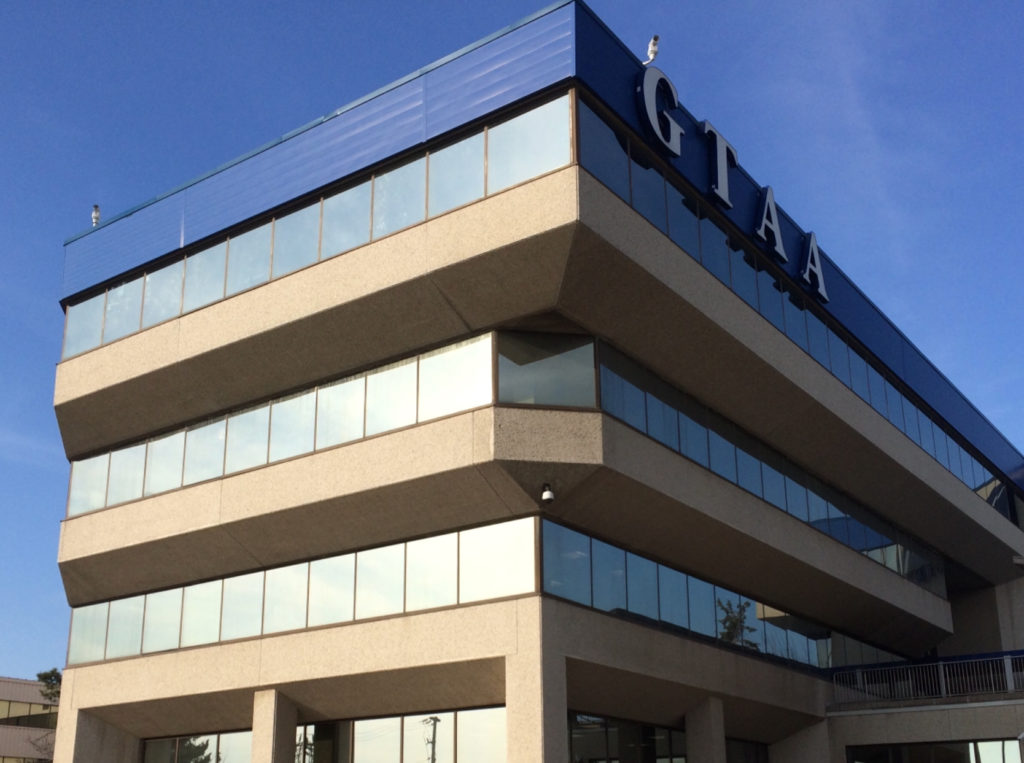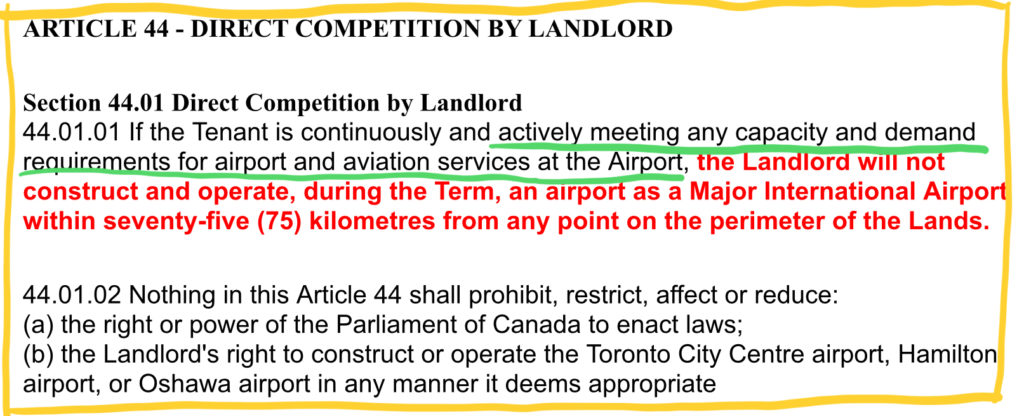
I am a long time fan of the rapid growth and success of Malton airport , now Toronto Pearson International airport. The not for profit GTAA ( Greater Toronto Airports Authority) has been leasing, developing and running the airport since 1996. The GTAA is often misunderstood, thanks mostly to the “Airports” in its name. It manages a single airport, Pearson, and appears to have no plans to do anything other than maximize Pearson airport.
It was not supposed to be this way. Back when our politicians first created the GTAA and leased Pearson airport to it to manage, it appeared to have higher aspirations. Could it live up to its name sake and build the aviation infrastructure needed for a booming Toronto region? From the start it appeared hobbled by the different economic and political goals between the various communities and levels of government representated on its governing board. The GTAAs role in the Pickering airport project appears to be a classic example of politics interfering with common sense.
In 2002 the GTAA concluded that building Pickering airport would both benefit the local economy and give it the room it needed to grow the various types of jet traffic without over stressing the communitys surrounding Pearson. Pickering was to become a reliever airport for Pearson, much as Gatwick was then becoming a reliever for heathrow airport in the U.K. Unfortunately, it needed the Canadian and, for practical reasons, the Ontario governments of the day to approve.
What happened next is a bit murky. Federal cabinet approval is needed to build an airport on the Pickering lands, even a small one. With a billion dollar piece of public land, an election on the horizon and the need to get the Ontario provincial government on side, the GTAA request went unanswered. Anti-competition concerns could also have been a factor.
The GTAA moved on, redoubling its efforts on a politically unencumbered path. Riding Toronto’s booming growth, It borrowed heavily to finance and build out the single airport it did manage, Pearson. Between 2009 and 2011 it even rebranded itself, and dropped its support of other airports, including canceling a $1.5 million dollar capacity maintenance agreement with privately owned Buttonville airport. The GTAA is Pearson airport, and everything else, from Toronto’s downtown Billy Bishop airport, to Buttonville airport, To Pickering, is either competition or of no concern.
Toronto Pearson International is in the process of becoming a mega-hub airport, creating jobs and economic investments for local municipalities, said Lorrie McKee, Director of Public Relations for the GTAA, in an interview in July of 2017. The Airport already directly or indirectly now accounts for more that 6% of Ontario’s GDP.
The result is Canada’s busiest and perhaps best run airport from a passenger point of view. With 44 million passengers annually Pearson has become an economic powerhouse driving the growth of the surrounding communities. It is also the only jet airport inside the Toronto regions passenger catchment area, giving it unparalleled pricing power for its product. According to GTAA strategy officer Kim Stangeby, Pearson has the largest 2 hour flight catchment area of any airport in North America. She neglected to mention that lack of choice appears to be the reason why.
The GTAA Standard and Poors credit report states the obvious, that the GTAA is a monopoly with a strangle hold on air travel for one in six Canadians. To quote:
“The authority’s monopoly position in delivering an essential transportation service together with its unencumbered rate-setting autonomy” is listed as a core reason of its sterling A credit rating.
Ominously S&P also lists another pillar of the GTAAs credit rating as “ protection that Transport Canada will not construct and operate a major international airport within 75 kilometers of Pearson”. This is a direct reference to section 44 of the GTAAs Pearson land lease agreement and to Pickering airport.

The GTAA transformation is almost complete, it needs only to renamed itself to the Pearson Airport Authority. This maybe the next step along the road to privatization into a for profit structure. The press, including the Toronto Star, are reporting that privatization could be in the cards. If so, it would have no problems organizing a successful initial public offering of its shares. It’s not every day that you get a chance to buy into a monopoly. A background for the prespectus can be found here.
Just one glitch is on the horizon, Pickering airport. After years of Pearson saying it can handle the growth , it’s capacity constraints and associated high costs are becoming obvious. The business case for Pickering is so strong that private investors would like to get into the airport business. The GTAAs missed opportunity is about to come back around but this time someone other than the GTAA will be building and managing it, possibly thanks to Canada’s anti-competition laws.
When Pickering is built, Pearson will lose its exclusive position in the Toronto region. It will have real competition from another jet airport with the same efficiency in terms of access to everything from people to jet fuel.
With competition, will The GTAAs credit rating be effected when It refinances it’s multi-billion dollar debt? Will it still be a sure fired investment opportunity when it goes private? Will it be able to keep the waterfall in it’s swanky headquarters building going? The GTAA seems to have little choice than to oppose Pickering airports development. Amazingly it’s land lease of Pearson gives it both the clout and means to do so, without even having to publicly state its opposition.
Section 44 of the Pearson airport land lease between the GTAA and the Canadian government has a no-competition clause that stops the “landlord” from building another airport within 75 km of Pearson. The clause is valid as long as Pearson still has additional aircraft capacity. Is this why the GTAA is going through hoops in its new masterplan trying to justify its newly increased aircraft capacity numbers, even though no new airside infrastructure has been built? Is this its chosen method of opposing the construction of Pickering airport?